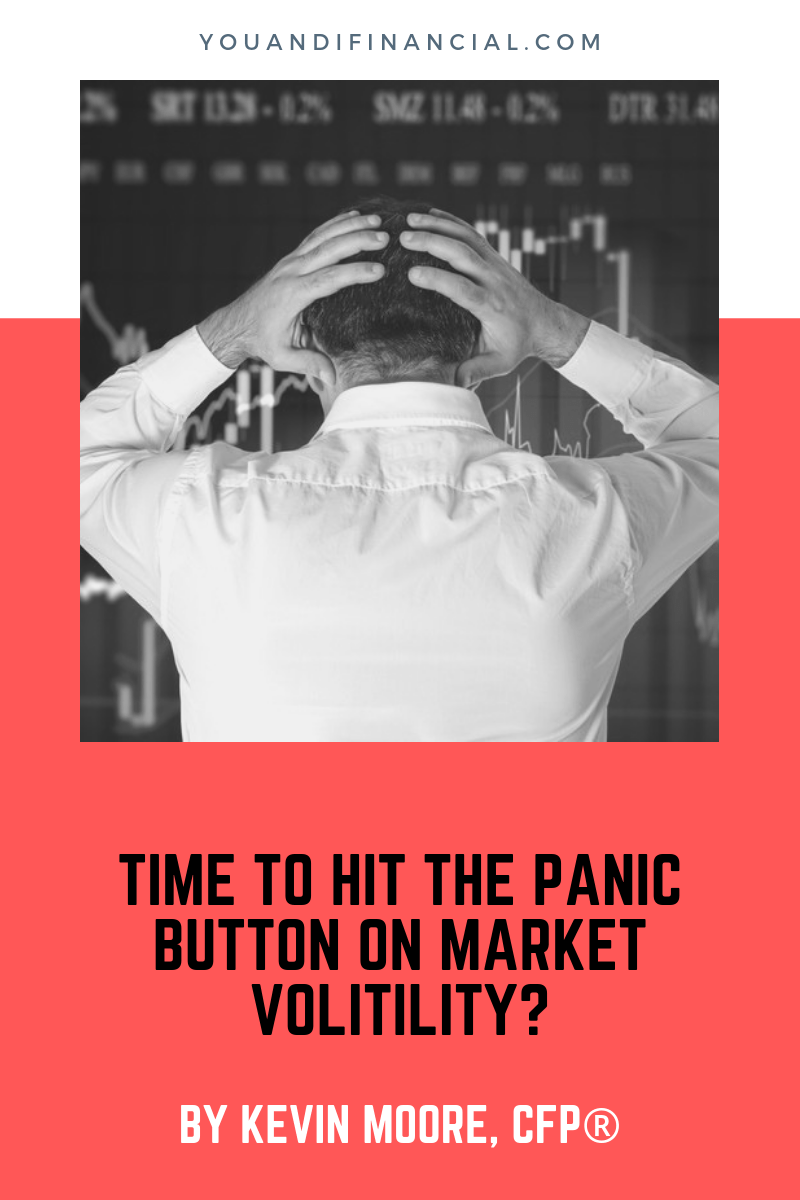
Time to Hit the Panic Button on Market Volatility?
May 20, 2019
Presented by Kevin Moore, CFP®
Recent declines have taken the U.S. stock markets down more than 2 percent. Not surprisingly, worries have started to grow. After all, this could be the end of the bull market. But is it time to hit the panic button?
The simple answer is no. Why? What we are seeing is actually normal volatility and not cause for panic. Still, it is a good time to take a deeper dive into the situation and, hopefully, gain some valuable perspective.
Market and economy in a good place
The market is down by a bit under 5 percent from the peak, which takes it back to the levels of late March 2019. This decline is not good, of course. But it still leaves us up more than 12 percent for the year—a good place to be. Despite the drop, the market is also still above its trend line, the 200-day moving average (an important indicator worth paying attention to). Overall, then, the market is in a good place.
The economy is also in a good place, which should continue to support the markets. Although we had a run of weak data, things have improved. When the economy is solid, market pullbacks tend to be short, although they can be quite sharp. So, despite the volatility, conditions are still favorable.
It’s all about confidence
If conditions are good, what’s driving the pullback? In a word, confidence. The recent resumption of the trade war between the U.S. and China has rattled business and investor confidence. Because of that uncertainty, even though the fundamentals remain sound, the price investors are willing to pay for those sound fundamentals has dropped. Confidence is now driving the markets. This dynamic means things could get worse as the rhetoric continues to dial up. In fact, it is quite possible that they will.
Confidence-driven pullbacks can lead to sudden drops. But they can reverse quite quickly. We have seen this story play out already, in the past six months, when stocks dropped toward the end of 2018 only to rebound to new highs this year. As long as the fundamentals remain sound (which they are), confidence-driven pullbacks also tend to end fairly quickly. We have seen this several times during this recovery, and this time is likely to be no different.
So far, so normal
As mentioned before, what we are seeing in the markets is normal—and even to be expected after the great start we have had to 2019. It is also a completely rational adjustment to the potential impact of the trade war on future growth. In the bigger picture, it is also completely normal, with more than half of all years showing declines worse than what we have right now. Remember, we saw bigger declines at the end of last year, only to see a rebound.
The time to start paying attention will be if the market cracks its 200-day moving average, which for the S&P 500 is now 2,776. Even if it does, however, it is not the end of the world. But it could mean the trend is at risk of changing, which could result in even more volatility. Even there, though, the likelihood is that the market recovers and resumes its upward climb.
What’s the big picture?
Given all this, should we ignore recent volatility? For most people, the answer is yes. But if you are worried, it may be time to take a closer look at the risks in your portfolio and make adjustments. As always, we can help you develop a portfolio you can live with through difficult times.
Big picture? We are likely not looking at a bear market now. But one will certainly be along at some point—and you need to be prepared.

